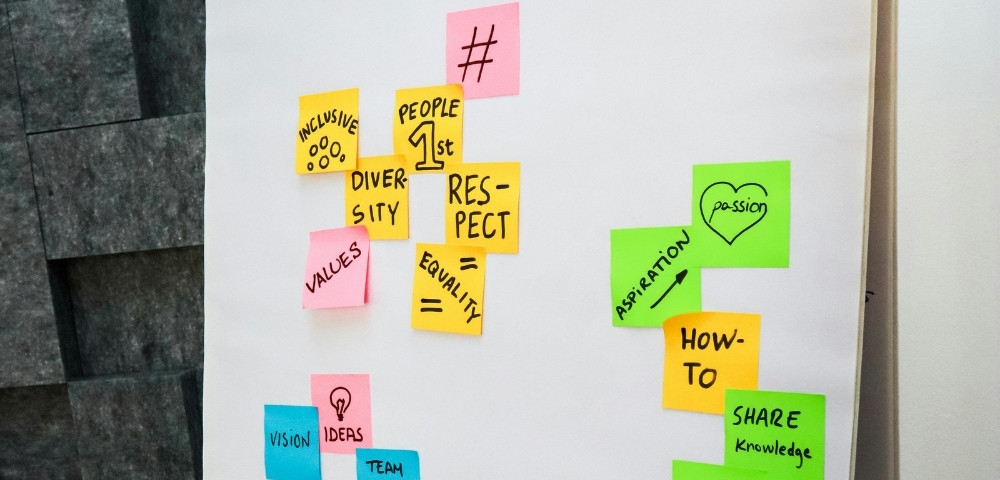You run sprints. You plan standups. You finish every task. But something still feels off. There is no real impact, no clear direction. That is the silent gap haunting most agile teams. This is where the concept of OKRs matters as the goal-setting method that might just fix it all. However, there will be doubt: can you actually make OKRs and Scrum work together without destroying agility?
In this deep dive, we uncover five sharp, must-know facts for project managers who want more than just outputs.
We will reveal
Understanding the Basics: OKRs vs. Scrum

What are OKRs?
OKRs stand for Objectives and Key Results. They help project teams set clear goals and measure progress using specific results. An objective shows what you want to achieve, and key results show how you will measure success. Companies use OKRs to stay focused, track performance, and work toward shared goals.
What is Scrum?
Scrum is a way for PMs to manage work using short cycles called sprints. Teams plan tasks, build small parts of a project, and improve each time. It includes roles like ‘Scrum Master’ and ‘Product Owner,’ a backlog of tasks, and regular check-ins to stay on track and make progress fast.
OKRs vs Scrum: Purpose Comparison Chart
| Feature | OKRs (Objectives and Key Results) | Scrum (Agile Framework) |
| Main Purpose | Strategic alignment and goal clarity | Tactical execution and product delivery |
| Focus | Outcomes and impact | Tasks, features, and delivery |
| Timeframe | Quarterly or long-term | 1–4 weeks sprints |
| Measurement Style | Key results (quantitative targets) | Velocity, story points, burndown |
| Ownership | Company-wide or team-level goals | Specific Scrum team responsibilities |
How OKRs and Scrum Work Together: Five Important Facts for PMs

OKRs Provide Strategic Direction to Scrum Sprints
Scrum helps workstream units figure out how to build something, but it does not always explain what to build or why it matters. That is where OKRs come in.
These elements give project units a shared purpose by pointing them toward larger goals. Instead of running sprints with a packed backlog and no sense of priority, they can use OKRs to guide which tasks deserve attention. This stops the team from working on too many random features or ‘nice to haves.’
When you set OKRs at the team level, you help the squad stay grounded on the results that truly matter. Imagine a unit focusing only on improving app speed, not just because it is a sprint task, but because the key result says, ‘Improve load time by 40%.’ That changes how they plan their work.
OKRs also act like a filter that keeps bloated backlogs under control, so teams do not drown in too many ideas.
OKRs Encourage Cross-Functional Collaboration Within Scrum Teams
When Scrum units chase shared OKRs, they stop thinking like separate roles and start acting like one unit.
This means developers, designers, and testers will stay in their own corners, but shared objectives bring them to the same table. That is how OKRs shake up the usual work habits. They remind everyone that success comes from achieving results, not just finishing individual tasks.
For example, if an objective says ‘Increase user satisfaction,’ the designer starts thinking beyond UI, the developer starts caring about performance, and the QA team looks at real user feedback. That kind of alignment pushes the team to talk more during daily standups and care about what each other says.
It also makes sprint reviews feel less like status updates and more like team checkpoints. Everyone becomes invested in the outcome, not just their piece of the puzzle. So, scrum already gives teams a rhythm, but OKRs give them a reason to move in sync.
OKRs Help Measure Outcomes, Not Just Output
It is true if we say Scrum helps execution teams track how much work they complete, but there is still a problem. It does not always show whether that work made a difference. This is where OKRs fill that gap.
They shift the focus from counting story points to measuring real impact. It is like this: Let’s say a team finishes five features in a sprint. It is undoubtedly great, but did those features increase user signups or improve customer satisfaction? OKRs answer that question.
Instead of just marking tasks as done, the team starts asking, ‘Did this change anything for the business or the user?’ That is where OKRs and Scrum make a powerful pair. Scrum keeps the engine running, and OKRs make sure the engine heads in the right direction. The whole point here is it is not enough to move fast; you need to move with purpose.
Therefore, OKRs push units to think beyond checkboxes and build things that actually matter. When you pair agile metrics with goal results, you get a full picture of progress.
OKRs Promote Transparency in Agile Planning
OKRs make team goals visible, and that helps everyone understand what the team is really working toward. Instead of hiding behind vague task lists or bloated backlogs, cross-functional teams can point to their OKRs and focus. That kind of openness changes how planning feels.
During sprint planning, the units can stack their backlog against their OKRs and see what supports the goal. They stop guessing and start choosing tasks that matter. In retrospectives, OKRs offer a clear way to reflect on what got done and whether the sprint moved the needle. When everyone sees the same OKRs, it is easier to stay aligned and have honest conversations about progress.
Product owners, developers, and even stakeholders outside the unit can all speak the same language. This feels like talking about why it is next. That makes every planning session sharper and every review more focused.
OKRs Reduce Scope Creep and Keep Scrum Teams Focused
Scope creep sneaks in when units try to do too much without asking if it supports the main goal. It starts with just one more feature, and suddenly the sprint loses focus. This is when OKRs help stop that from happening.
When a project unit uses OKRs as a filter, they can push low-impact tasks aside and focus on what really moves the goal. On one hand, scrum gives teams a structure; on the other hand, OKRs give them direction. Instead of grabbing random ideas from the backlog, the team can ask, ‘Does this help us hit our key results?’ If the answer is no, they leave it out. That keeps the sprint clean and clear.
It also reduces stress because the team does not waste time switching between tasks that do not connect. Fewer distractions mean better delivery and stronger outcomes. Sprint reviews stop being messy wrap-ups and become check-ins with purpose.
How to Integrate OKRs into Scrum

Set Quarterly OKRs; Align Them with Sprint Goals
It is better to start by setting OKRs every quarter so your units always know the complete picture. Then, connect those OKRs directly to sprint goals. This gives each sprint a clear purpose and helps the team pick tasks that matter. Instead of guessing what to build, the team builds what brings them closer to the real target.
Review OKRs During Sprint Planning
When the team plans each sprint, look at your OKRs first. Let them guide the conversation and shape the tasks you choose. This keeps the team focused on goals, not just features. It also makes sprint planning smoother as you stop adding random work and start selecting what truly moves the team forward.
Reflect on OKRs in Retrospectives
Use your retrospectives to check how your sprint helped or did not help achieve your OKRs. Don’t just talk about what went wrong; talk about what moved the goal. This gives your team more insight into what matters and encourages better decisions for the next sprint.
Involve Stakeholders in OKR Reviews
Bring in your stakeholders when reviewing OKRs. They need to see what progress looks like and understand where the team stands. When everyone joins the conversation, decisions become clearer and trust grows. It also shows that the team cares about results, not just delivery.
Scrum and OKRs: A Perfect Match in an ERP-Powered Workflow

You may understand that Scrum builds fast. OKRs build focus. But when you run both inside a smart ERP, you build momentum. It is not a wise idea to let your project units juggle tools. It is advised to give them a system that thinks, tracks, and aligns. If you collaborate with a reputable software provider who has years of experience in various industries, no delay can stop you from achieving your project goals.

